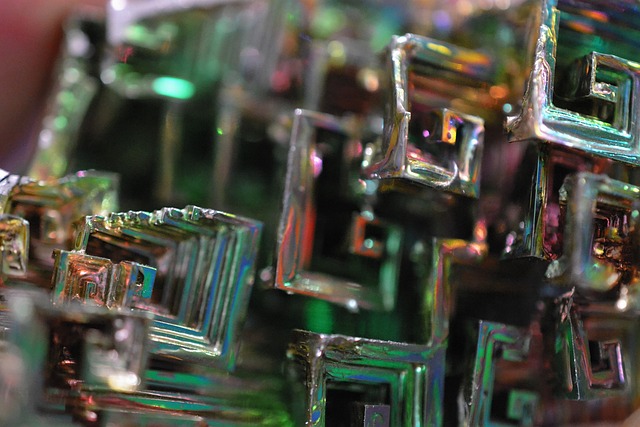Bismuth (symbol Bi) is a chemical element with the atomic number 83. It is a dense, silvery-white metal that is not easily oxidized in air. Bismuth compounds are widely used in a variety of industries, including cosmetics, pharmaceuticals, and electronics. Because of its versatility, this fascinating element has been used across an array of applications for decades.
But despite its long history, there is still a great deal of confusion surrounding bismuth and its properties. One of the main areas of confusion surrounding bismuth is about whether or not it is radioactive. In this blog post, we will explore the truth about bismuth and set the record straight about its radioactivity.
What is Radioactivity?
Radioactivity is a natural phenomenon that occurs when the nucleus of an atom spontaneously emits radiation. This radiation can take the form of particles or waves, and can be harmful to living organisms in certain circumstances. Radioactivity can occur naturally, as in the case of radioactive isotopes like carbon-14 or uranium-238, or as a result of human activity, such as in nuclear power plants.
The most prevalent types of radiation are alpha particles, beta particles, and gamma rays. Alpha particles are helium nuclei and are positively charged, while beta particles are high-speed electrons or positrons and are negatively or positively charged, respectively. Gamma rays are high-energy photons that have no charge. These different types of radiation interact with matter in different ways, and their effects can vary depending on the type of radiation and the material it encounters.
Not all elements are radioactive, but those that are typically have unstable nuclei that undergo radioactive decay over time. This decay can result in the emission of radiation and the transformation of the element into a different element or isotope.
The Truth About Bismuth’s Radioactivity

Despite its use in a variety of everyday products, bismuth is often mistakenly thought to be non-radioactive. In fact, bismuth is considered to be radioactive, but there’s more to it.
In 2003, researchers at the Institut d’Astrophysique Spatiale in Orsay, France detected alpha particles resulting from the decay of bismuth-209, bismuth’s most common isotope, and calculated its half-life to be 1.9×10^19 years. This discovery confirmed that bismuth is radioactive, but its extremely long half-life also confirmed that bismuth is virtually stable for all practical purposes
To put this in perspective, bismuth’s half-life of 1.9×10^19 years is a billion times longer than the age of the universe! Even if all the stars in the universe were to burn out, which would take around 10^14 years based on our understanding of astrophysics, it would still take a hundred thousand times longer for half of the bismuth atoms in a chunk of bismuth to decay. Therefore, bismuth is considered to be ‘barely’ radioactive and safe for everyday use.
Bismuth Radiation Shielding
Ironically, while there is a great deal of discussion about bismuth’s radioactivity, it is being used in radiation shields for CT scans. According to an essay by American Journal of Roentgenology, bismuth breast shielding can reduce radiation exposure of the breast and posterior chest wall during CT (computed tomography) examinations.
Breast tissue is particularly susceptible to the harmful effects of radiation, and the use of bismuth shields has been shown to be effective in reducing radiation exposure. Even though it is more expensive than lead (the material most often used in radiation shielding), bismuth is non-poisonous and of comparable effectiveness, making it an interesting alternative to lead in this application that may become more widespread in the coming years.
Non-Radioactive Bismuth Compounds
Although bismuth-209 bismuth is technically considered radioactive, the compounds used across a variety of industries, as mentioned above, are not. For example, bismuth oxide is used in the production of glass, ceramics, and pigments.
Bismuth subnitrate is commonly used as an active ingredient in many pharmaceutical products such as antacids, anti-diarrheals, and anti-hemorrhoid drugs. This is because it has protective and astringent properties that can help alleviate stomach problems and reduce inflammation.
Bismuth oxychloride, on the other hand, is widely used in the cosmetic industry as a pearlescent pigment in mineral makeup products like foundations, blushes, and eye shadows. Its ability to provide a silky, smooth texture to the products while also adding a natural glow has made it a popular choice among cosmetic manufacturers.
Bismuth crystal is also becoming increasingly popular in the jewelry and art industries due to their unique iridescent hues. These crystals are considered safe and non-toxic, making them a popular choice for those with sensitive skin. Bismuth crystals are formed through a process called crystallization and are grown under specific conditions to achieve their unique patterns and colours. Due to their natural beauty and safe composition, bismuth crystals are often used in sculptures, jewelry, and other decorative pieces.
Bismuth’s unique properties make it a versatile element with a wide range of applications across multiple industries, from pharmaceuticals to cosmetics and more.
Bismuth Toxicity
Another misplaced concern surrounding bismuth that arises due to its being a heavy metal, much like with its radioactivity, is its toxicity. Bismuth is relatively non-toxic to humans. In fact, it only poses a risk of bismuth poisoning if consumed in large quantities, much like many other elements. In such cases, bismuth poisoning can result in a range of symptoms including gastrointestinal distress, kidney damage, and neurological symptoms.
Nevertheless, bismuth’s low toxicity has made bismuth a useful element in healthcare, where various bismuth-based drugs have been developed to treat a number of diseases. According to the National Library of Medicine, these include colloidal bismuth subcitrate (CBS), ranitidine bismuth citrate (RBC), bismuth subsalicylate (BSS), bismuth iodoform, and even certain radioactive bismuth complexes (212Bi/213Bi), which have been used in clinics to treat specific conditions. Bismuth salts, such as bismuth subsalicylate, are also commonly used to treat diarrhea and other gastrointestinal issues.
Bismuth and Environmental Contamination
In regards to environmental safety, bismuth is not considered a significant environmental contaminant. Even though bismuth is a heavy metal, it is not as toxic as other heavy metals such as lead or mercury.
Is Bismuth Safe?
Bismuth metal is also not persistent in the environment and does not bioaccumulate in living organisms, which means that it does not build up over time in the food chain. This low toxicity and lack of bioaccumulation make bismuth a preferred alternative to other heavy metals in various industrial applications. However, it is still important to handle and dispose of bismuth compounds responsibly to prevent any potential harm to the environment.
The Bismuth Smith – Fostering an Awareness and Appreciation for Bismuth
As you can see, bismuth is a fascinating element with a long history of use, and it is important to understand its properties and uses in order to fully appreciate its value. Although it is technically radioactive, its extremely long half life makes it safe for practice use to the point where it is even used in radiation shielding,
Bismuth is also widely used in other industries, including cosmetics, pharmaceuticals, and jewelry. If you’re interested in experiencing the beauty of this beautiful element for yourself, look no further than The Bismuth Smith.
Check out our jewelry and sculptures made from bismuth crystal. You can also buy bismuth crystals from our shop and enjoy its unique crystalline structure. Feel free to contact us with any questions. We’re happy to share our knowledge and passion for bismuth with you!






